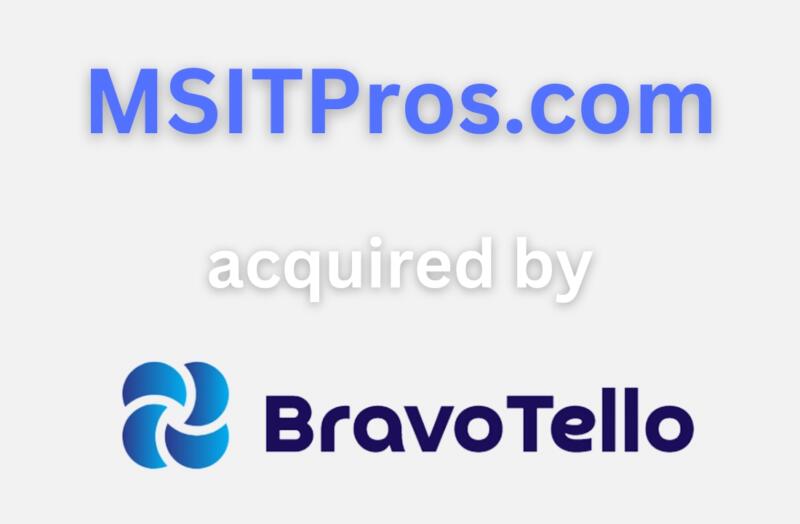Sheridan, WY 08/28/23
Acquisition News
We are excited to announce that the msitpros.com domain has been acquired by bravotello.com!
For over a decade, msitpros.com has been an invaluable resource for IT professionals looking to stay current on Microsoft technologies. With its extensive library of technical articles, discussion forums, and training materials, msitpros.com established itself as a go-to destination for anyone working with Microsoft products.
As the new owners of the msitpros.com domain, we at bravotello.com recognize the site’s reputation and are committed to maintaining its high standard of quality content. We plan to build on msitpros.com’s past success by expanding its offerings while still providing the level of expertise that visitors have come to expect.
We want to thank the msitpros.com team and community for building such an exceptional resource over the years. We look forward to welcoming you all to bravotello.com and continuing the mission of empowering IT professionals with the knowledge they need to be successful.
Please feel free to reach out with any questions. We are committed to ensuring this transition is seamless for our loyal visitors.
Thank you for being a part of the msitpros.com community! We look forward to serving you in this next chapter.
- Contact Person: Hector Bravo
- Company: Terra Brands LLC
- Address: 30 N Gould St. Ste R, Sheridan, WY 82801
- Phone: +1 (307) 243-4086
Other Topics:


